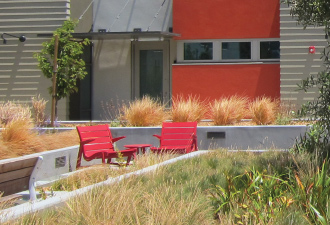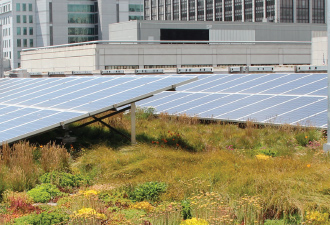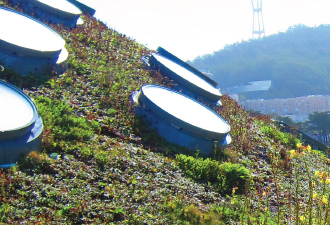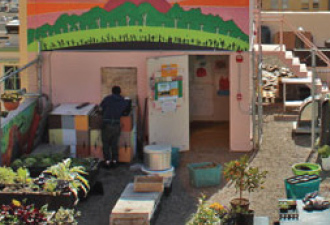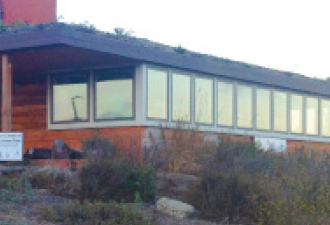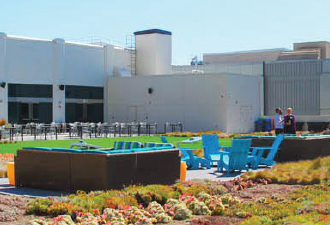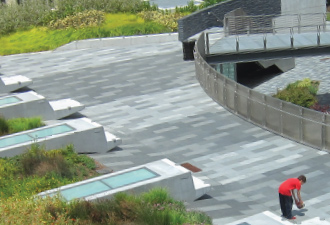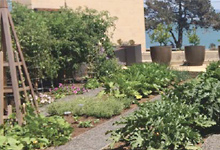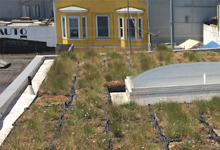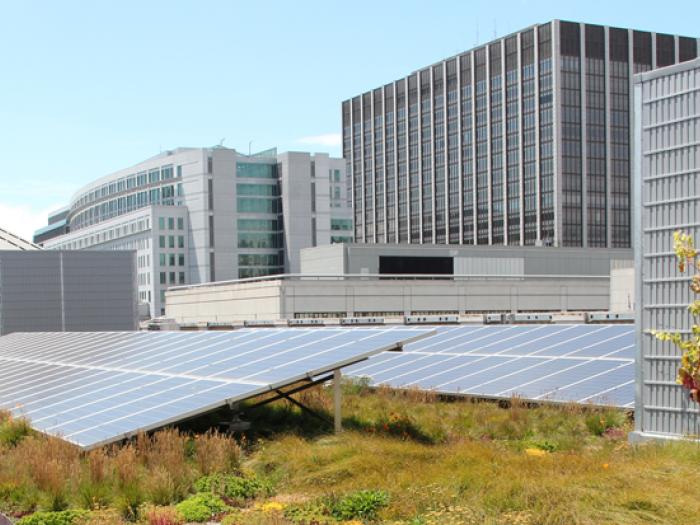
Better Roofs
Project Status: Completed
Effective January 1st, 2017, San Francisco became the first U.S. city to mandate solar and living roofs on most new construction. With the passage of this legislation, between 15% and 30% of roof space on most new construction projects will incorporate solar, living roofs, or a combination of both.
Only a small percentage of San Francisco's rooftops are put to productive use. With up to 30% of the City's total land area composed of rooftops, there is a huge potential for using these empty spaces to generate economic, social, and environmental benefits. Living roofs are one of a number of sustainable design approaches that take advantage of underutilized rooftop space.
The Planning Department has researched best practices, current green building process, and best site-specific solutions for the City to make living roofs a more viable option for existing and planned buildings. The Department will continue to work with other City agencies to explore how rooftop space can be designed to its highest and best use, including other strategies like solar, open space, and play areas.
January 2017
In dense, urban cities our rooftops are valuable space that can be used more efficiently to benefit our environment and our communities. Rooftops are 30% of San Francisco's land area, and an untapped resource. This new ordinance will provide flexibility for the building designer, owner, and developer to choose the best combination of solar photovoltaic, solar water heating and living roof systems to maximize benefits based on location and building program. With the myriad of benefits that these technologies provide, the legislation would encourage a higher and better utilization of valuable rooftop space.
Our team loves touring living roofs in San Francisco to learn more about different projects. We traveled to each of these projects to learn first-hand about the project details. Click on each to learn more! Do you know a living roof we can visit? Please let us know!
ARUP engineers analyzed the cost-effectiveness of meeting the Better Roofs requirement entirely with a living roof instead of solar for the alternative compliance path. The report was unique as its inputs and metrics were specific to San Francisco's climate. Our Mediterranean climate and recent drought made the San Francisco report critical for accurate results.
The analysis was conducted with a living roof that uses 6 inches of lightweight media with native and adapted plants and two building types of similar size that are good candidates for living roofs: medium commercial and small multi-family. The costs and benefits of the living roof were compared to the costs and benefits of a baseline membrane roof with cool with coating that is a requirement for compliance with California Title 24.
The analysis found that a living roof provides net financial benefit to the building owner, while providing significant additional benefit to the tenants, and the broader community. The largest cost of a living roof – the one-time installation cost – is largely offset by the avoided one-time stormwater management equipment costs that would be incurred with the baseline roof. The largest potential benefits is added real estate value, which also accrues to the building owner.
To read the full report, download it here.
Contacts
For inquiries around implementing Better Roofs on a specific project, please reach out to TechQ@sfgov.org
In the Media
- San Francisco Planning Press Release, April 2018
- Former Supervisor Wiener's Press Release, September 2016
- National Public Radio, "San Francisco Requires New Buildings to Install Solar Panels," April 2016
- San Francisco CBS Local, "San Francisco Legislation Aims to Add Green Roofs to New Buildings," September 2016
- SF Gate, "Bill Would Encourage Rooftop Gardens on New SF Buildings," September 2016


